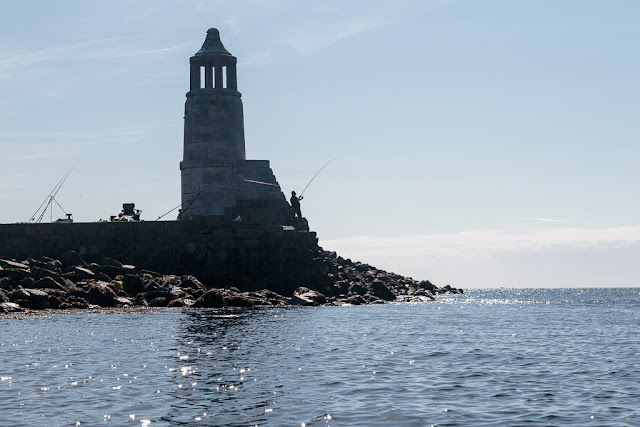...rocky Solway coast until we arrived...
...at a delightful stretch of shell sand backed by a castellated folly.
We stopped for a second time to...
...explore what was an early 20th century bathing house. A folly in Galloway is known as a "coo (cow) palace" and this was a good example with...
...the remains of a stone and iron pier extending into the Solway.
The folly has a beautiful view over to Barlocco Isle and the distant mountains of the Isle of Man. It was built by James Brown who was a wealthy Manchester merchant. He retired to nearby Knockbrex House in 1895. Until he died in 1920, he spent much of his fortune building a series of gardens, walls, buildings and follies around the estate.
The jagged reefs of this coastline were the scene of many shipwrecks but it was also used by smugglers who would have found...
...this to be a most convenient cave for concealing contraband from the customs cutters. For many years the entrance was concealed by a thick growth of ivy but a storm a few years ago tore it away.

The cave has a dry level floor and would make excellent shelter in a storm.
This part of the Solway was a lawless place not only frequented by smugglers but also by pirates. We decided to reenact walking the plank. Was this to be a folly on Ian's part?
Time was pressing on and the ebb tide was now in full swing so we made our way back to the boats to continue our exploration of the Solway by sea kayak.





















































